|
|
||||||||||||||||||||||||||||||||||||||||||||||||||||||||||
|
Please sign my Guestbook and leave feedback |
||||||||||||||||||||||||||||||||||||||||||||||||||||||||||
|
Recent Additions |
||||||||||||||||||||||||||||||||||||||||||||||||||||||||||
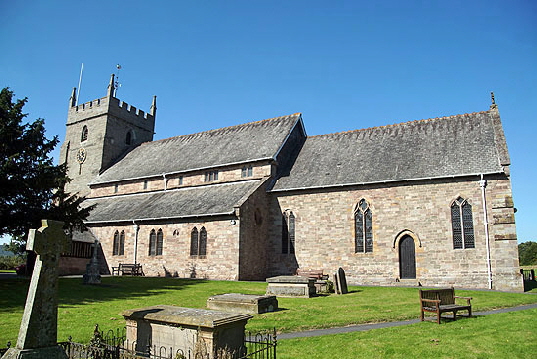 |
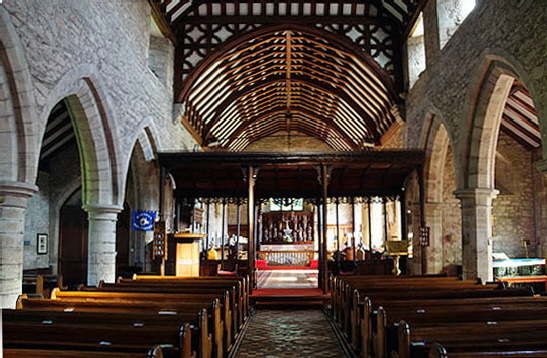 |
|||||||||||||||||||||||||
|
Left: The church has a very orderly, almost antiseptic, appearance with clean rooflines and (I’m not complaining) reasonably regular, if dull, window spaces. The chancel is as long as the nave. No sign of Norman work here! The tower only dates from 1810. Right: I think Burghill is very pretty internally. The screen is is very good condition and, although, it has been moved eastwards and heightened at some time is fifteenth century original. It’s all a matter of personal taste of course but I think the timbered roofs here are very attractive although nobody mentions when they date from - although they are clearly modern. Note the absence of any chancel arch. |
||||||||||||||||||||||||||
 |
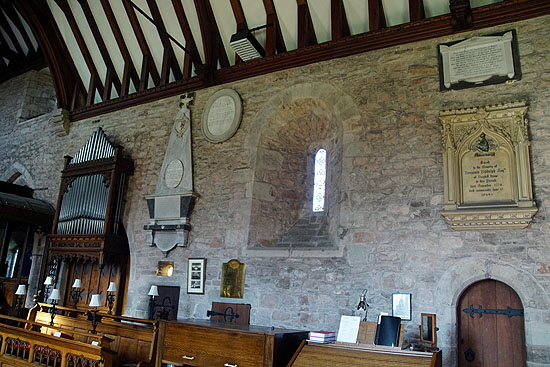 |
|||||||||||||||||||||||||
|
Left: The chancel. It was substantially rebuilt in the fourteenth and fifteenth centuries but the north wall is original Norman - see the splayed window on the left - and this is its original extent. It was then a chancel of very substantial length for the Norman era. Right: The north chancel wall with its fine Norman window. Note also the round-headed doorway that has been reset. Beyond it is the vestry that was mediaeval but which was altered so much in the nineteenth century that it is to all intents and purposes modern. |
||||||||||||||||||||||||||
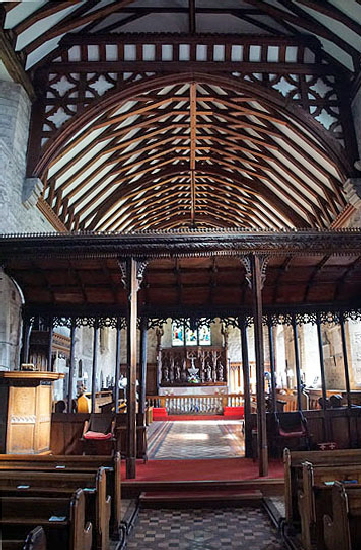 |
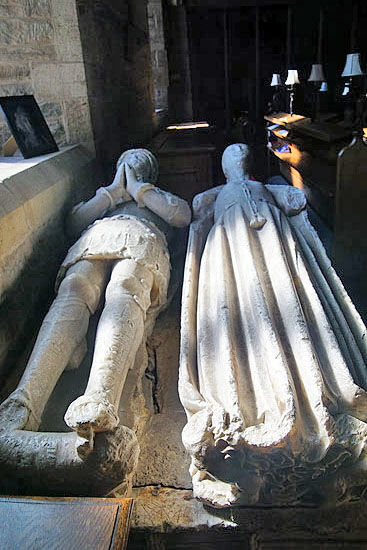 |
|||||||||||||||||||||||||
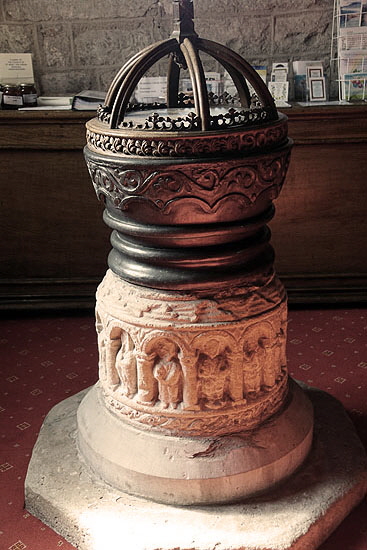 |
||||||||||||||||||||||||||
|
Left: The screen looking through to the chancel. Centre: The alabaster effigies of Sir John Milbourne and his wife date from around 1440. Right: The definitely peculiar font! Descriptions of it seem to be rather vague and inconsistent. The cover i, of course, modern. It seems likely that the top section of the lead bowl is original but the lower section seems to be a replacement from the tower collapse in the nineteenth century. The base is indisputably Norman. So was the original font a Norman confection of a lead bowl and a stone pedestal? It is not so much the stone base that is the surprise but that it was decorated in much the same way as font bowls were decorated in many locations (see Wansford, Northants for example). Every way you look at it, this font is an oddity. |
||||||||||||||||||||||||||
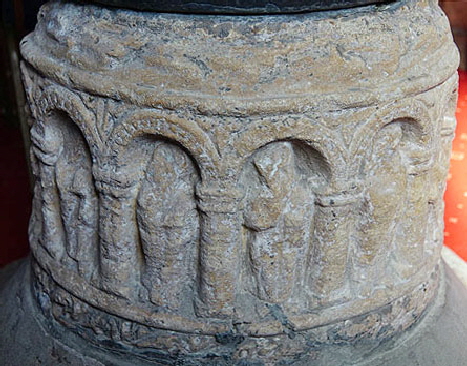 |
||||||||||||||||||||||||||
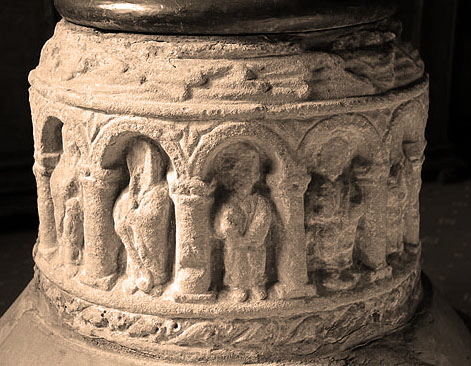 |
||||||||||||||||||||||||||
|
Left and Right: Every face has been defaced. a sure sign that these figures represented Christ and the Apostles. The weathering suggests a long period of extra-mural rustication! |
||||||||||||||||||||||||||
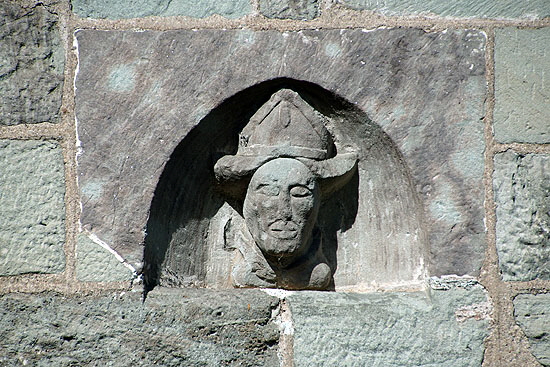 |
||||||||||||||||||||||||||
|
In the exterior south wall we find this rather odd but unmistakable carving of a mitred bishop. Pevsner dates it to around 1330 but who really knows? |
||||||||||||||||||||||||||
|
Click Here to Return to “The World’s Greatest Church Trail III” |
||||||||||||||||||||||||||